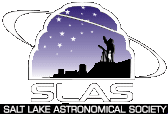|
Checkout the Binocular Astronomy Resource Page
Scan The Skies With Both Eyes
Binoculars may be the best way for beginners to canvas the cosmos They are an
easy and affordable way to start cruising the cosmos. Many experts recommend
using binoculars before -- or instead of -- buying a telescope.
Consider these guidelines when choosing
binoculars:
Size. Binoculars come in all sorts of sizes,
from pocket-size 10-by-20s to large 25-by-100s. The first number refers to
magnification. For astronomy purposes, get at least 7 power. Remember, the
larger the number, the smaller your field of view (because of the enlargement).
Binoculars with more than 12 power are too hard to hold steady, unless a tripod
is used. The second number refers to the diameter of the lens opening. The
larger the opening, the better the light-gathering ability. A good all-purpose
pair of binoculars is 7-by-50 or 7-by-60.
Mount. A way to hold binoculars steady is a
must. Tripods are available with special adapters for binoculars; a good one is
$50-$60. Or try using a sack of flour -- or anything firm but moldable -- to set
on your car roof or other surface and rest the binoculars on it. Leaning your
elbows on a hard surface and holding the binoculars won't be stable enough.
Portability. A
7-by-50 or 7-by-60 pair of binoculars is easily transportable and can be used
for purposes other than astronomy, such as sporting events or hiking. If you get
too large a pair, they might be too big and heavy to lug around.
Price. You can
buy good quality binoculars for $100-$150. Avoid cheap off brands; many
well-known camera manufacturers also make binoculars.
Practice. It
may take a few tries to get the hang of finding things in the sky. Start by
fixing your eyes on the moon, then raise the binoculars to the fixed position of
your gaze.
Get Informed.
Find out more with a book that focuses on binocular astronomy, or look through
astronomy magazines or Web sites.
Sources:
John Sohl, Ott Planetarium at Weber State University; Patrick
Wiggins: NASA Solar System Ambassador
|

![]()